weather
Latest

Apple buys Dark Sky weather app
Apple has bought weather app Dark Sky, which is highly regarded for its radar maps and accuracy of its hyperlocal, by-the-minute weather predictions. It'll still be available on the iOS App Store, as you might expect, but the Android and Wear OS versions will shut down on July 1st. You'll no longer be able to download the app on those platforms, and people who are still subscribed to the service when Dark Sky pulls the plug will receive a refund.

Alexa can now provide traffic updates and severe weather alerts
Depending on where you live, traffic can be unpredictable, making it yet another thing to check while getting ready for work. Alexa should make planning your commute a bit easier with a new voice control skill. Just ask Alexa about your commute, traffic conditions or directions. You can also have that information sent to your phone. A notification will appear on your device -- tap that and your preferred map app will open with the route guidance. Google Assistant has done this for a while, but Amazon customers will likely enjoy the added convenience.

MIT helps self-driving cars ‘see’ through snow and fog
Self-driving technology has come a long way, but it can still be tripped up by bad weather. A team from MIT's Computer Science and Artificial Intelligence Lab (CSAIL) may have a solution. They've developed a way to help autonomous vehicles "see" by mapping what's beneath the road using Ground Penetrating Radar (GPR).

UK to spend $1.6 billion on the world's fastest weather supercomputer
The UK's weather service, the Met Office, will spend £1.2 billion ($1.6 billion) to acquire the world's most powerful climate supercomputer, the government has announced. That's over ten times more than its current Cray XC40 cost, but it will deliver more timely and accurate forecasts. That could make the difference in knowing whether your flight will be canceled or your street flooded, according to the service.
2019 was Earth’s second-warmest year on record
If the melting ice caps and recent wildfires didn't tip you off, NASA, the National Oceanic and Atmospheric Administration (NOAA), and the World Meteorological Organization (WMO) have hard data showing that the effects of climate change are only getting worse. According to the agencies, 2019 was the second hottest year since record keeping began in 1880, and was only topped by 2016's temperatures. The trend is clear: Every decade since the '60s has, on average, been warmer than the one before it. Even more alarming is the fact that the past five years have been the hottest five on record.
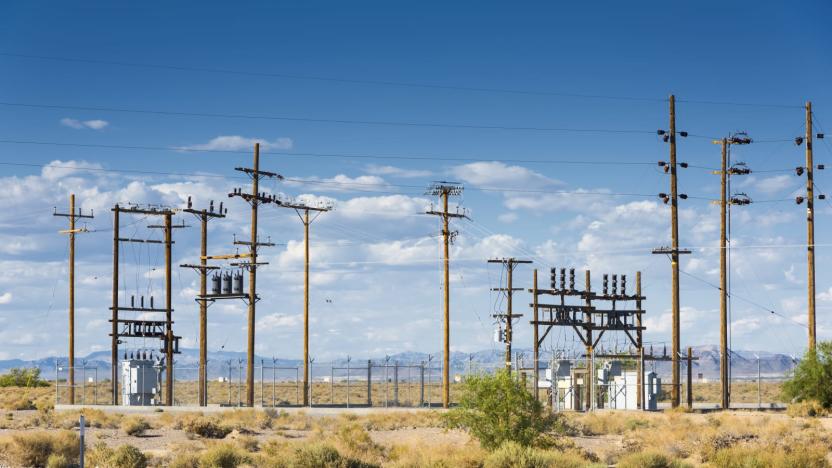
800,000 Californians could be without power by the end of the day
By the end of the day, more than half of all California counties could be without power. In an attempt to prevent wildfires, the state's largest utility Pacific Gas & Electric (PG&E) is rolling out a planned power outage. Once fully implemented, it will leave an estimated 800,000 customers in the dark and span from Silicon Valley to the Sierra.
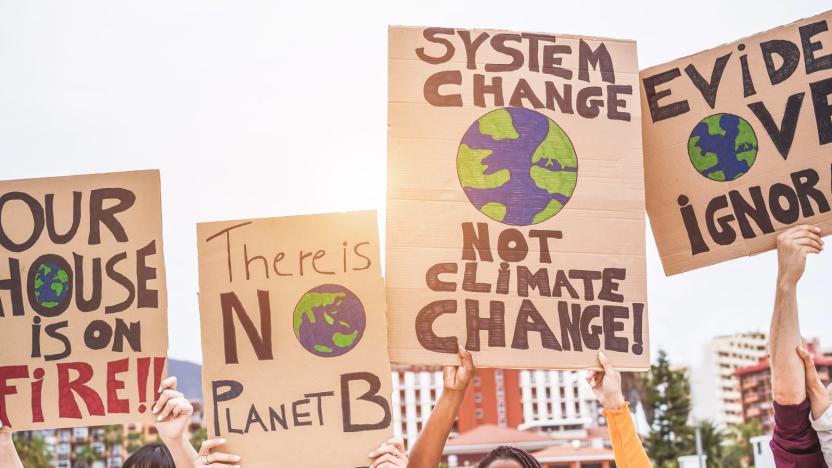
New models show that the earth is warming faster than first thought
Scientists have made no secret of the extreme challenges posed by climate change, with the Intergovernmental Panel for Climate Change (IPCC) repeatedly stressing the importance of keeping global warming below two degrees. But now it seems the situation is much more serious than previously understood, with new climate models predicting average temperatures could rise by as much as seven degrees by 2100.
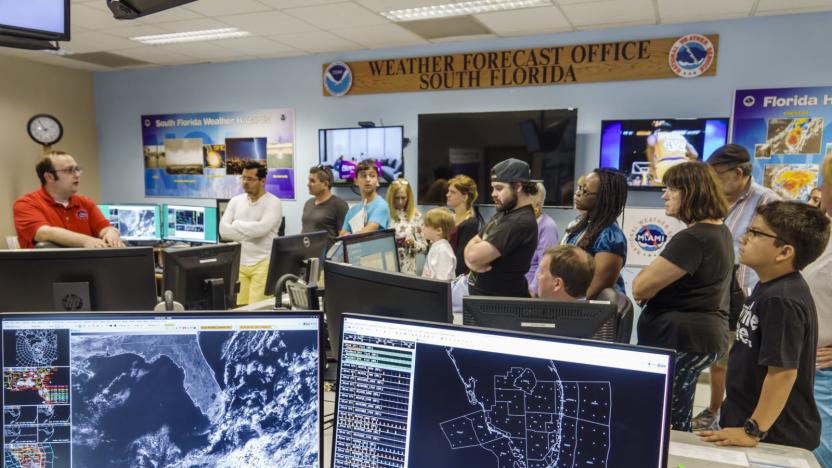
US weather forecast model gets a much-needed upgrade
Meterology revolves as much around good weather models as it does good weather data, and the core US model is about to receive a long-overdue refresh. NOAA has upgraded its Global Forecast System with a long-in-testing dynamical core, the Finite-Volume Cubed-Sphere (aka FV3). It's the first time the model has been replaced in roughly 40 years, and it promises higher-resolution forecasts, lower computational overhead and more realistic water vapor physics.
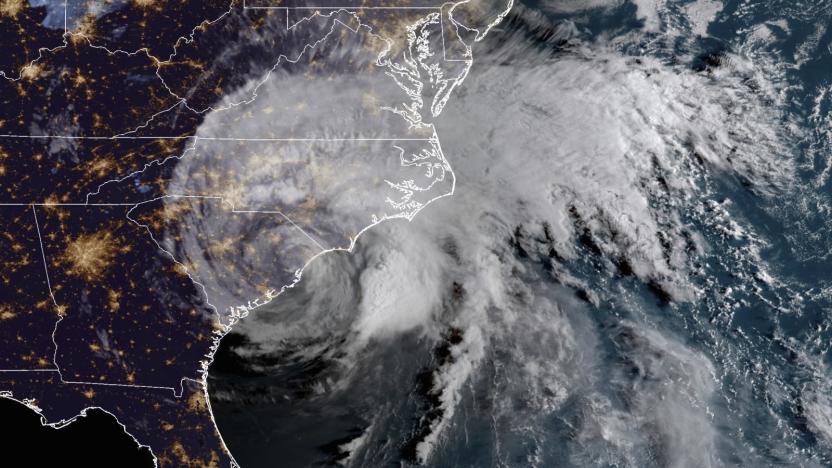
Senators ask the FCC to limit 5G auction to protect weather forecasts
In March, the Federal Communications Commission (FCC) began auctioning blocks of the 24 GHz spectrum, which could be used to implement future 5G networks. Shortly afterward, the US Navy released a memo warning that 5G in the 24 GHz band could interfere with weather satellites. Now, Senators Ron Wyden (D-Ore.) and Maria Cantwell (D-Wash.) are urging the FCC not to allow wireless companies to operate 5G in that spectrum until weather forecasting operations are protected. The Senators wrote a letter to FCC Chairman Ajit Pai yesterday, citing the Navy's memo and accusing the FCC of ignoring "the serious alarms the scientific community is raising."

NASA is giving us daily weather reports from Mars
NASA says its new Mars weather website will be "geeky fun for meteorologists." For the rest of us, it's a daily reminder that Mars is ridiculously cold. The website shares a daily weather report with temperature, atmospheric pressure and wind speed collected by InSight lander, the NASA spacecraft currently stationed near the red planet's equator.

NASA's pint-sized satellite could improve weather forecasts
Apparently, NASA has been testing a small, shoebox-sized satellite that could make weather forecasts a lot more accurate. It's called RainCube for "Radar in a CubeSat," and it uses tiny instruments to provide real-time look inside storms. The agency has deployed the test unit from the ISS into Low Earth Orbit in July, which captured its first images of a storm over Mexico in August. In September, the satellite also captured images of Hurricane Florence's first rainfall. In other words, the experiment has been successful, though most likely far from over. See, the hope is to use a whole fleet of RainCubes to monitor severe storms.

AccuWeather will give you places to go based on the weather
Place recommendations don't tend to take the weather into account. You don't really want to visit the park when it's pouring outside, do you? AccuWeather certainly doesn't think so -- it's partnering with Foursquare on a "hyper-local" recommendation system in MinuteCast that takes the conditions into account when pointing you to new destinations. It'll suggest the beach or the pool on a hot day, or point you to a nearby coffee shop if you want shelter from the rain.
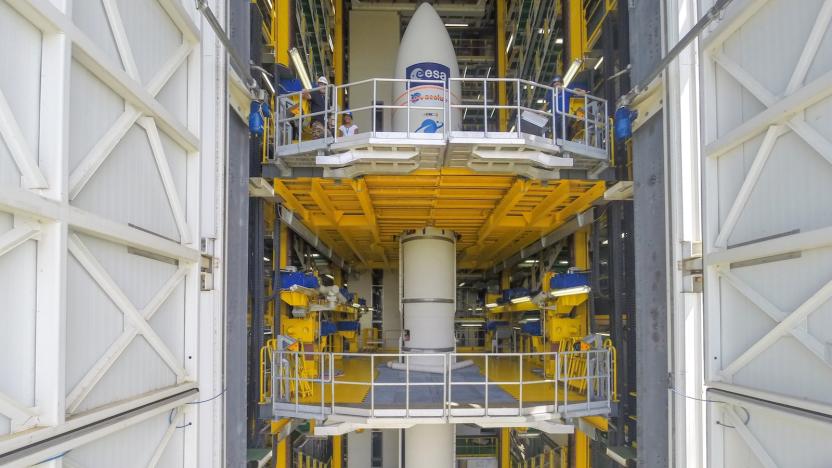
Watch the ESA launch its wind-mapping Aeolus satellite at 5PM ET
The European Space Agency is launching its Aeolus wind-mapping satellite today from the Guiana Space Center in Kourou, French Guiana. Once in orbit, Aeolus will measure winds from the Earth's surface up to the stratosphere using powerful lidar technology, and it will do so on a global scale. The data Aeolus collects will help improve weather forecasting and provide valuable information for climate change research.
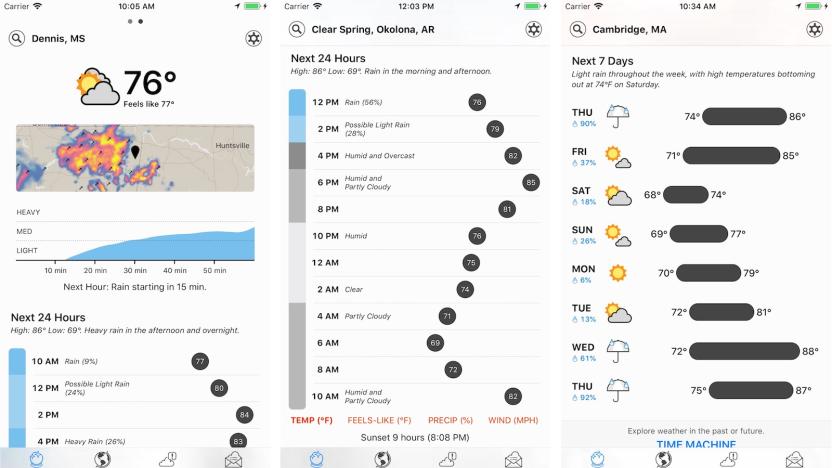
Dark Sky update includes saved locations and a unified timeline
The Dark Sky weather app got a major update today, which includes new visuals and additional features. First up is the timeline. Rather than having different aspects of the forecast spread out across multiple tabs, everything is now included in a single, unified timeline. Just scroll down to see current conditions, the next hour rain forecast, the next 24 hours and the following week's forecasts. Additionally, weather conditions for the day like temperature, precipitation, wind and UV index are visualized more descriptively with circles denoting each hour's condition fanning out left to right in order to show changing intensity.

Tangled 'particle' helps scientists model rare ball lightning
Ball lightning (those bright spheres of light during some thunderstorms) remains mysterious despite decades of study. But how are you supposed to get a better look at it in a lab? Researchers might have discovered how through a happy accident: create a tangled atomic mess. They created a Shankar skyrmion, a quasiparticle whose artificial magnetic field, it turns out, mimics the electrical and magnetic fields of ball lightning. The team applied a magnetic field to a Bose-Einstein condensate (a state of matter for boson gas cooled to near absolute zero), in this case made of rubidium, to get the atoms to spin along the surface of a ball yet twist inside that ball.
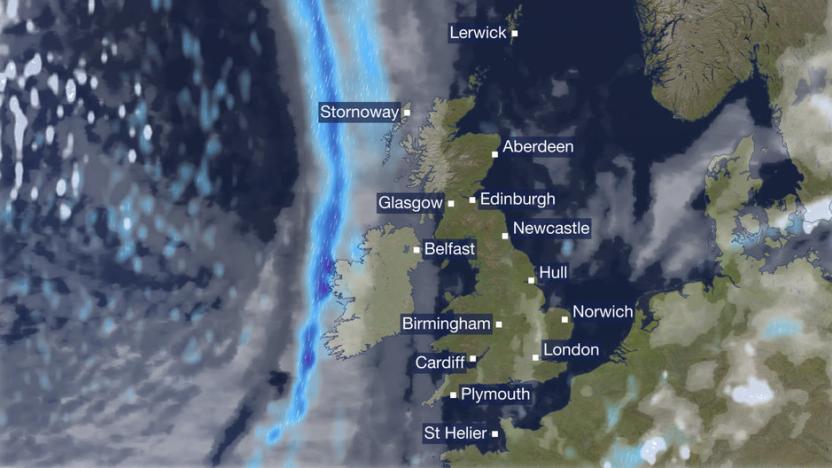
People aren’t happy with the BBC’s big weather redesign
Today, the BBC is launching a major redesign of its popular weather forecast services — and some Brits are furious. It all started in 2015 when the broadcaster announced it was ditching the Met Office and looking for a new provider of accurate weather data. MeteoGroup was eventually crowned the winner and work began to overhaul the technical architecture underpinning the BBC's much-loved TV bulletins, mobile apps and website. The new web and mobile designs were rolled out to "some users" last month and the reaction was overwhelmingly negative. On a blog post written by the BBC's Michael Burnett, one user commented: "You seemed to have ruined what was a superb site with a wealth of information."
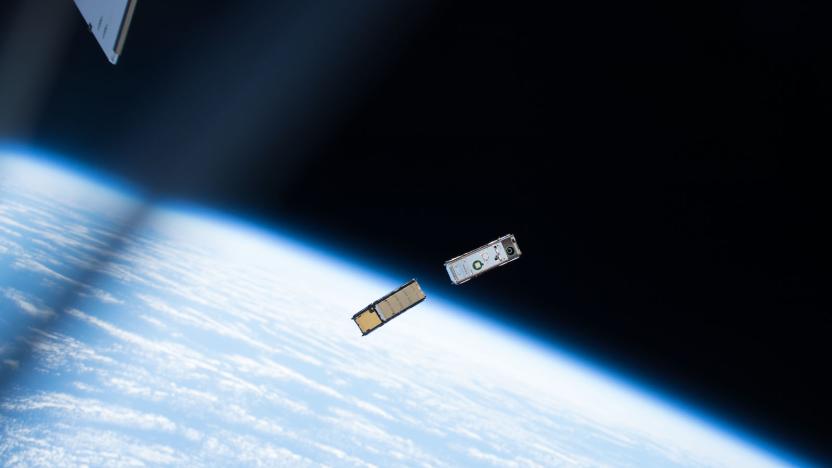
A tiny NASA satellite mapped Earth’s atmospheric ice
Last May, NASA launched a small, bread loaf-sized satellite into orbit around Earth. Dubbed IceCube, the satellite's mission was to measure cloud ice in our planet's atmosphere -- a challenging task that researchers have previously only been able to perform in limited ways. Sensing ice clouds requires measurements at a range of frequency bands but particularly within what are known as submillimeter wavelengths, or electromagnetic wavelengths that fall in between those of microwave and infrared waves. The problem is, instruments that can take those kinds of measurements have previously had to be on board high-altitude research aircraft, meaning measurements were limited to the areas where those aircraft were flying. Launching a satellite that can perform those measurements could open up what parts of the atmosphere can be studied, and that's where IceCube comes in.
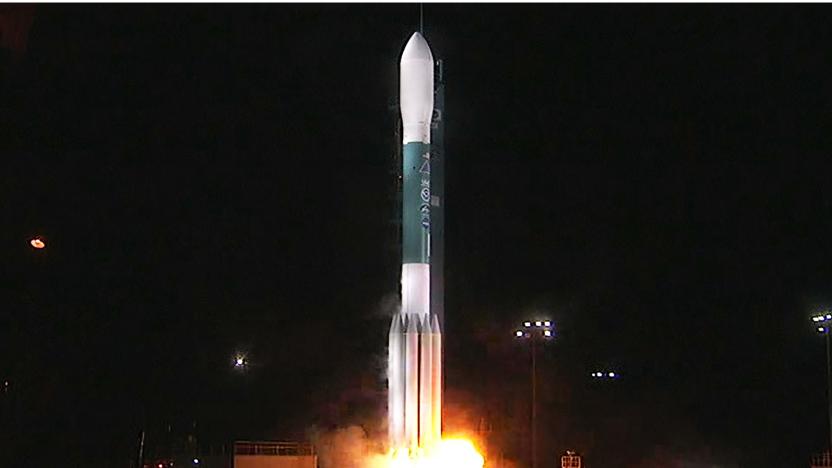
NASA satellite launch promises accurate week-long forecasts
NASA and NOAA know that multi-day weather forecasts can be crucial to tracking hurricanes and their aftermath, and they're about to significantly boost the reliability of those forecasts. They just launched JPSS-1 (Joint Polar Satellite System-1), the first of a series of NOAA satellites that should improve the accuracy of weather forecasts extending as long as a whole week. It includes five upgraded instruments (including an infrared imaging sensor and a microwave sounder) that can track weather-influencing factors with exacting detail, such as atmospheric temperature, clouds, ice cover, ocean colors and volcanic ash.
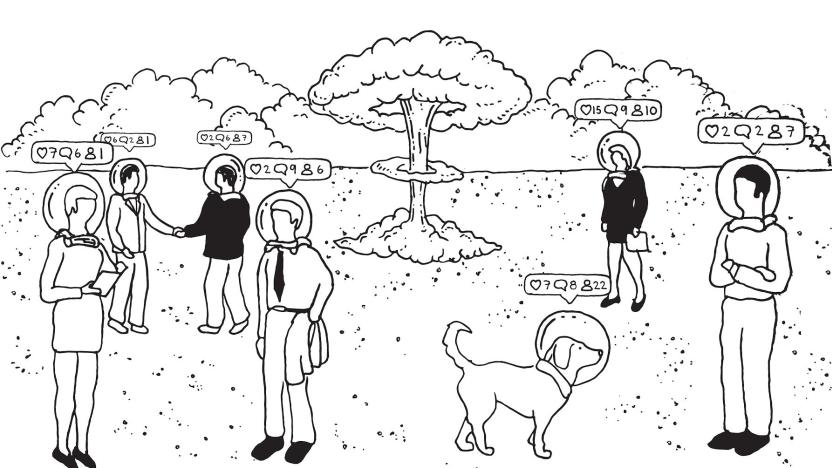
Apps and gadgets for the 'Blade Runner' future we didn’t ask for
Punks, monks and Harrison Ford running scared through a poisonous cityscape were just a few of the details that made the original Blade Runner feel like its environment was a standalone character in the film. It felt as alien and familiar as the way we live today, with an environment turning against us, a government that couldn't care less and a corporate ruling class that would make the Tyrell Corporation jealous. The dystopian world of Blade Runner felt like it had naturally come to be. Unlike the version of Blade Runner we seem to be living in now, which feels like someone threw a switch at New Year's, and surprise, we're living in hell. Suddenly we have to catch up to living in dystopian fiction really fast, lest we die from fires, hurricanes, connected Nazis or nuclear war. So it's probably best that we use every bit of tech to our advantage so we make it to the next noodle bar, as it were.

Drone pilots are getting their own weather forecasts
Whether you think drones are super-great or want to shoot them out of the sky, they've become increasingly vital for missions like crop spraying, inspection and filming. Yet, it's impossible for operators to get the kind of detailed weather info that airplane pilots have because UAVs generally fly at much lower altitudes. Now, a company called Earth Networks is unveiling Sferic DroneFlight, "hyperlocal, low-altitude weather weather forecasting for drone operators.









